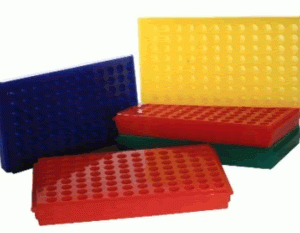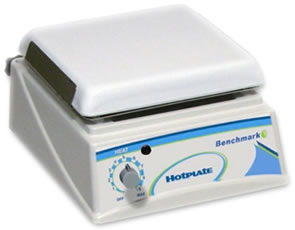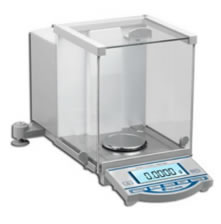Description
If your research involves mice and rats but you only have a rat stereotaxic frame you need a Mouse and Neonatal Rat Adaptor. This adaptor is designed for use with traditional ‘U’-framed stereotaxic instruments like the Classic Lab Standard series. Ear and bite bar heights can be independently adjusted to accommodate a wide range of ages and assist in leveling the skull.
Overview
For use with the 51600 Series Lab Standard™ and other Stereotaxic Instruments
Model organisms with soft skulls, such as the mouse and the neonatal rat, are difficult to secure firmly in a traditional stereotaxic instrument. The stainless steel ear bars used for adult rats are too heavy to provide a secure hold without compressing the sides of the skull inward (which closes the airways and impedes blood fl ow). Further, the neonatal rat pup has no external opening of the auditory canal into which to insert the ear bars.
Stoelting’s Mouse and Neonatal Rat Adaptor employs light, Delrin® ear bars with tapered points on one end, and rubber tips on the other, to facilitate surgery on mice and rat pups.
A unique feature permits ear bars to be independently adjusted in height to level the skull. Laser engraved scales show the vertical positions of the ear bars. A tooth bar and nose clamp secures the nose.
New improvements to this popular stereotaxic instrument include an increased overall length to accommodate larger, more mature animals, and the addition of specialized jaw holder cuffs, which securely clamp the zygomatic processes of the skull. The jaw holder cuffs fit over the ends of the ear bars, replacing the rubber tips, providing an alternative non-invasive means of securing the animal’s head in the stereotaxic stage. These options for “triple point” securing of the animal’s head in this adaptor make it the most versatile mouse adaptor available. Set of two jaw holder cuffs included.
Detail
Unique, light ear bars
Ear bars may be independently adjusted in height, a unique feature of this stereotaxic instrument, to level the skull. Laser engraved scales show the vertical positions of the ear bars. A tooth bar and nose clamp secures the nose. A well, carved in the thick aluminum body, may be filled with dry ice and alcohol for hypothermic anesthesia of neonatal animals. The 51625 Adaptor clamps securely on the “U” frame of the Lab Standard™.
Model organisms with soft skulls, such as the mouse and the neonatal rat, are difficult to secure firmly in a traditional stereotaxic instrument. The stainless steel ear bars used for adult rats are too heavy to provide a secure hold without compressing the sides of the skull inward (which closes the airways and impedes blood flow.) Further, the neonatal rat pup has no external opening of the auditory canal into which to insert the ear bar points.
Improved Design
New improvements to this popular stereotaxic instrument include an increased overall length to accommodate larger, more mature animals, and the addition of specialized jaw holder cuffs (51647), which securely clamp the zygomatic processes of the skull. The jaw holder cuffs fit over the ends of the ear bars, replacing the rubber pads, providing an alternative non-invasive means of securing the animal’s head in the stereotaxic stage. These options for “triple point” securing of the animal’s head in this adaptor make it the most versatile mouse stereotaxic available. Set of two jaw holder cuffs included.
 0091 Polypropylene Reversible 1.5ml And 2.0ml Microcentrifuge Tube Rack, 96 Places (Pack Of 5) Bio Plas
1 × $31.00
0091 Polypropylene Reversible 1.5ml And 2.0ml Microcentrifuge Tube Rack, 96 Places (Pack Of 5) Bio Plas
1 × $31.00  0095 Pink Polypropylene Reversible 1.5ml And 2.0ml Microcentrifuge Tube Rack, 96 Places (Pack Of 5) Bio Plas
2 × $31.00
0095 Pink Polypropylene Reversible 1.5ml And 2.0ml Microcentrifuge Tube Rack, 96 Places (Pack Of 5) Bio Plas
2 × $31.00  0052 Snap On Tube Rack Cover, 96-Well, Polypropylene, Clear Natural Bio Plas
1 × $14.50
0052 Snap On Tube Rack Cover, 96-Well, Polypropylene, Clear Natural Bio Plas
1 × $14.50  D4075- Quick-DNA Midiprep Plus Kit- Zymo Research
1 × $273.00
D4075- Quick-DNA Midiprep Plus Kit- Zymo Research
1 × $273.00  0093F Fluorescent Green Polypropylene Reversible 1.5ml And 2.0ml Microcentrifuge Tube Rack, 96 Places (Pack Of 5) Bio Plas
1 × $33.00
0093F Fluorescent Green Polypropylene Reversible 1.5ml And 2.0ml Microcentrifuge Tube Rack, 96 Places (Pack Of 5) Bio Plas
1 × $33.00  BCLO3016 Paper Roll For Bluetooth Printer Bas Alliance Bio Expertise
1 × $42.50
BCLO3016 Paper Roll For Bluetooth Printer Bas Alliance Bio Expertise
1 × $42.50  0091F Assorted Fluorescent Polypropylene Reversible 1.5ml And 2.0ml Microcentrifuge Tube Rack, 96 Places (Pack Of 5) Bio Plas
1 × $33.00
0091F Assorted Fluorescent Polypropylene Reversible 1.5ml And 2.0ml Microcentrifuge Tube Rack, 96 Places (Pack Of 5) Bio Plas
1 × $33.00  0094F Fluorescent Orange Polypropylene Reversible 1.5ml And 2.0ml Microcentrifuge Tube Rack, 96 Places (Pack Of 5) Bio Plas
1 × $33.00
0094F Fluorescent Orange Polypropylene Reversible 1.5ml And 2.0ml Microcentrifuge Tube Rack, 96 Places (Pack Of 5) Bio Plas
1 × $33.00  0097 Lavender Polypropylene Reversible 1.5ml And 2.0ml Microcentrifuge Tube Rack, 96 Places (Pack Of 5) Bio Plas
1 × $31.00
0097 Lavender Polypropylene Reversible 1.5ml And 2.0ml Microcentrifuge Tube Rack, 96 Places (Pack Of 5) Bio Plas
1 × $31.00 



